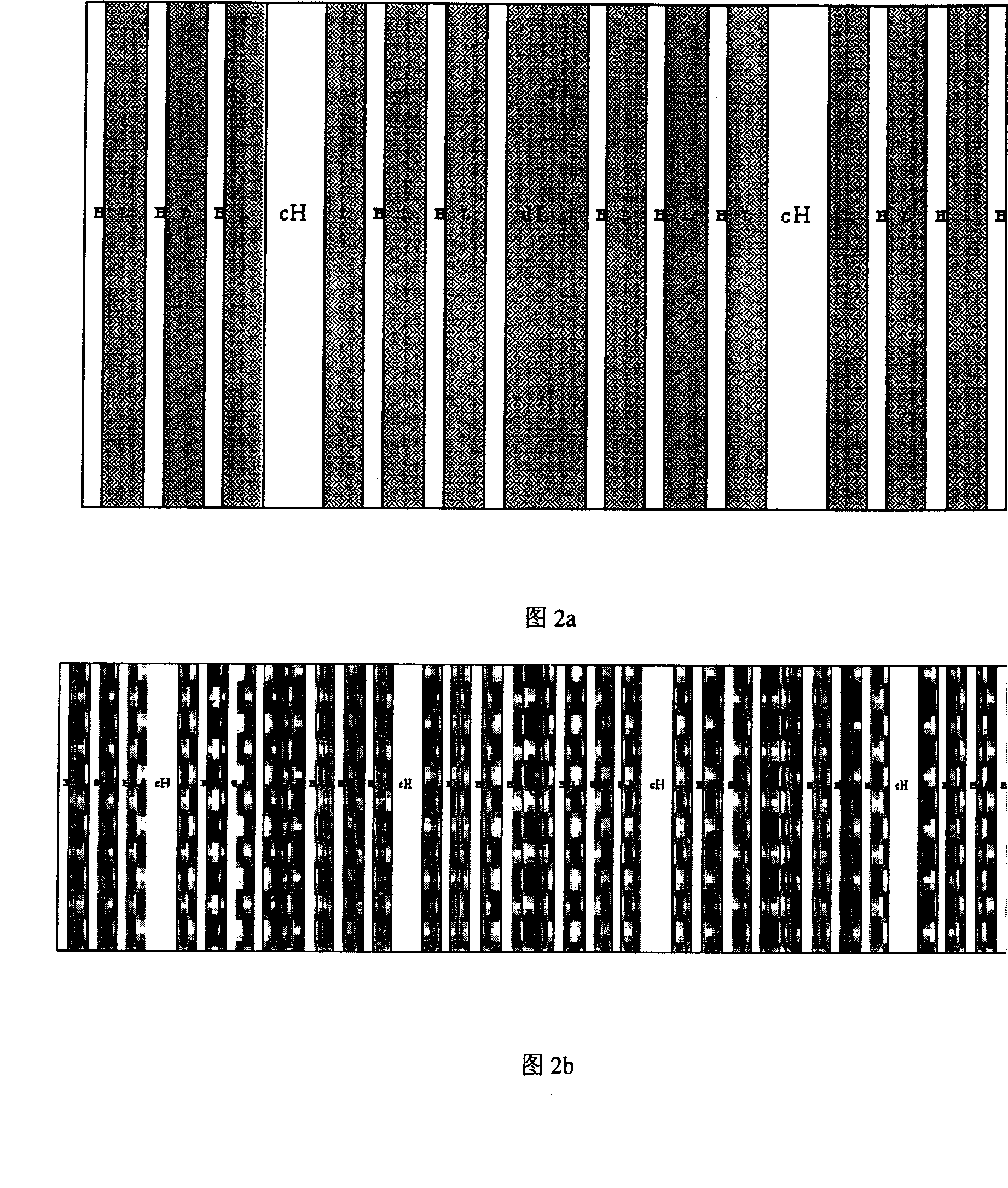Channel passband relative position independently regulatable one-passband two-channel filter
A relative position, two-channel technology, applied in the direction of the filter, etc., can solve problems such as difficult to independently adjust the relative position, limit the application range of dual-channel and multi-channel filters, etc.
- Summary
- Abstract
- Description
- Claims
- Application Information
AI Technical Summary
Problems solved by technology
Method used
Image
Examples
Embodiment Construction
[0027] It can be seen from Figure 1 that as the thickness of the middle layer c increases, the position of the channel moves to the long-wave direction. However, the relative spacing between channels is always the same and cannot be changed.
[0028] In Figure 3, as e increases from 0.5L to 0.8L, the channel on the right moves from 684.89nm to 716.26nm, but the channel and passband on the left remain basically unchanged at the original position.
[0029] In Figure 4, as d increases from 0.15L to 0.4L, the channel in the middle moves from 631.11nm to 670.19nm, but the passband on the left and the channel on the right remain basically unchanged at their original positions.
[0030] In Figure 5, as c increases from 1.5L to 1.9L, the passband on the left moves from 546.99nm to 583.66nm, but the two channels on the right remain basically unchanged at their original positions.
[0031] In Fig. 6, starting from c=1.5L, d=0.2L, e=0.5L, c, d and e increase alternately until c=1.6L, d=...
PUM
 Login to View More
Login to View More Abstract
Description
Claims
Application Information
 Login to View More
Login to View More - R&D
- Intellectual Property
- Life Sciences
- Materials
- Tech Scout
- Unparalleled Data Quality
- Higher Quality Content
- 60% Fewer Hallucinations
Browse by: Latest US Patents, China's latest patents, Technical Efficacy Thesaurus, Application Domain, Technology Topic, Popular Technical Reports.
© 2025 PatSnap. All rights reserved.Legal|Privacy policy|Modern Slavery Act Transparency Statement|Sitemap|About US| Contact US: help@patsnap.com



